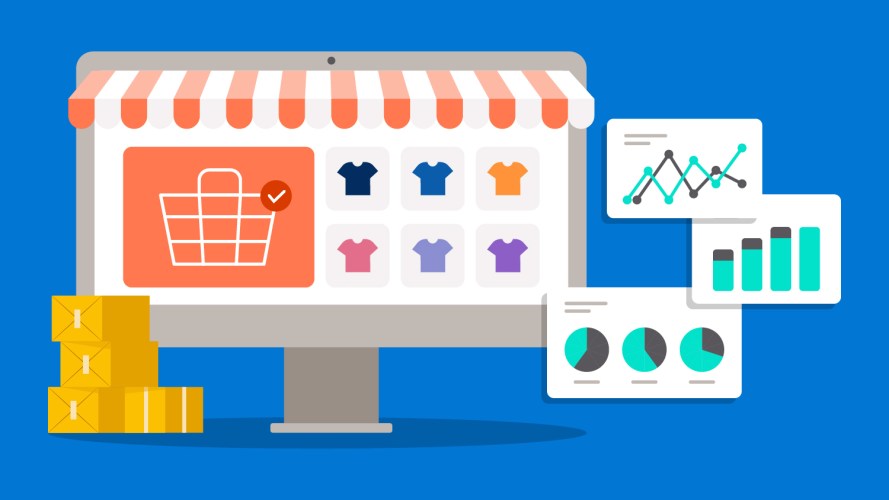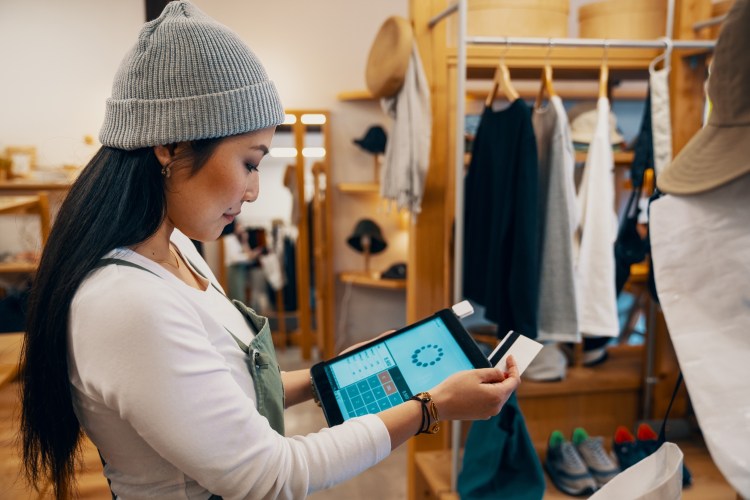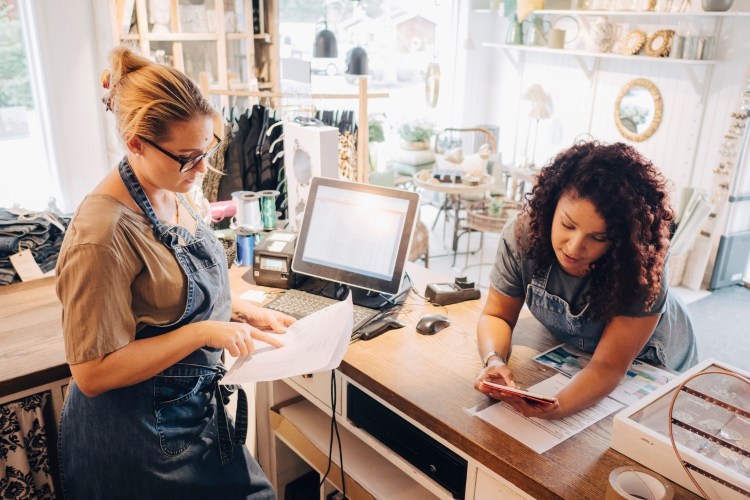Want to Cater To Younger Shoppers? Start With Web3 and NFTs

Luxury retailers are building engaged, exclusive communities of younger customers with Web3 technology and NFTs. What can the greater retail industry learn?

Selena Liu
Luxury brands like Gucci and Balmain are leading the retail industry in using technology like non-fungible tokens (NFTs) and Web3 to connect with customers and offer new experiences. Creating exclusive experiences and embracing younger consumers’ need for digital self-expression are luxury retail trends that are shaping how the larger retail industry in general can better engage with customers.
Today, luxury fashion is less about status, and more a form of self-expression. Gen Z and Millennials are demanding more creative ways to connect with their favorite brands. These customers favor co-creation and collaboration over simple consumption. They are also conscious shoppers, favoring higher quality and sustainability, influencing luxury brands to embrace the world of resale.
New to Web3?
Web3 technologies — such as blockchain, tokens and the metaverse — can help businesses deepen relationships with customers. See how these technologies can improve customer loyalty and help you launch digital product lines.



The adoption of technology like Web3 fuels many of these luxury retail trends, but you don’t need to be a high-end brand to create this kind of experience for your customers.
New forms of self-expression and identity are key luxury retail trends
We all have a digital identity. Your Linkedin profile, Instagram, or Twitter are all forms of identity and channels for self-expression.
Recently we’ve seen platforms like Discord, Telegram and Roblox gain in popularity. And as more platforms emerge with Web3, digital identities will evolve and the way we express ourselves in them will too.
In a recent Roblox Metaverse Fashion Trends report, 47% of respondents said they use digital fashion to express their individuality. And 45% said their avatars represented a fantasy character. It’s no wonder many luxury brands like Burberry, Gucci, and Louis Vuitton are experimenting.
As brands explore these new platforms, it’s important to consider the strategy — stay true to your core brand values and how you want your customers to “live the brand.”
“Digital products challenge the traditional product value chain: from design to production, distribution and engagement,” said Laura Puricelli, a metaverse luxury fashion advisor. “Digital assets can be endlessly creative, with no physical boundaries in terms of materials.”
The business models that applied to physical products won’t always translate to digital assets. It’s important for brands to consider these new channels of engagement and how individuals want to express themselves there.
Using Web3 and NFTs to connect with younger customers
Luxury brands focus on delivering memorable experiences, personalized engagement, and membership for brand loyalty. This is also what younger generations place more emphasis on. Following the lead of luxury retail trends, brands are focusing more on these unique experiences — and less on points programs — to earn younger consumers’ loyalty.
So what part do Web3 and NFTs play? Over the past few years, companies have used metaverses, virtual reality, and NFT projects to make the curated customer experiences that younger shoppers want. Through NFT projects, brands created communities with exclusive benefits and early access to products and services. Brands found new means of engagement — the ‘utility’ of a token.
For example, clothing brand Scotch & Soda released 1,000 NFTs as part of its Club Soda 3.0 pilot initiative — a type of loyalty program. Token holders receive exclusive access to special events and early access to products. The program helped attract an audience consisting of 30% new customers and 2,000 wallet IDs.
To do this, they started promoting Club Soda 3.0 through their traditional media channels, then launched a pre-sale site. Customers who signed up gained access to a Discord channel, bringing these brand advocates together in an online community.
The buzz worked, as they minted all 1,000 Founders Pass NFTs in the first day. It also helped onboard their consumers who might not have known about Web3 technologies before. Now they’ve built deeper relationships with their customers, who are now part of an exclusive community.
Similarly, brands such as Gucci, Moncler, and Balmain have released NFT collections that grant exclusive access to a physical product or event.
Some luxury brands also see this as a gateway to attract new customers at a lower price point. Others aim to create value for token holders through co-creation and collaboration. As these companies continue to experiment, we’re seeing more exciting use cases and experiences evolve.
Empowering co-creation and collaboration
Digital assets and proof of ownership have sparked a fire in the creator economy. Artists, designers, and influencers have found new ways to be rewarded, capturing new audiences on new platforms.
Luxury brands have used this trend to showcase talent through co-creation and collaboration. Brands such as Porsche, Salvatore Ferragamo, and Nike are co-creating with their customers and creatives. Through NFTs, they’ve launched co-created collections of digital artworks and physical products.
By tapping into the luxury retail trends of co-creating with digital creatives and customers, companies are able to launch products quicker. Brands can also capitalize on a trend faster this way. Gucci x Superplastic and Balmain x Barbie are just two examples. Not only does this collaboration bring greater brand awareness, but companies can test the success of a collaboration in small batches before launching a full collection.
You could also use co-creation to improve your connections with a specific segment, defined by NFT ownership.
For example, Tiffany & Co. targeted Cryptopunk NFT holders with their NFTiff collection. The collection resulted in $12.5M of revenue, and sold out within 20 minutes. Cryptopunk NFT holders were given exclusive access to buy an NFTiff, redeemable for a bespoke pendant of their Cryptopunk avatar.
Blockchain can help authenticate resale products
Global luxury resale markets are expected to reach over $51 billion by 2026, which means brands need to find a way to authenticate their products. And as consumers become more conscious when making purchasing decisions, the demand for input traceability increases.
Blockchain offers a potential solution. The technology enables an immutable ledger — a tamper-proof way to record transactions. This allows traceability of ownership and tells a story of a product. We can trace a product’s origins, through the supply chain and ownership, and guarantee authenticity.
Brands like Swiss luxury watchmaker Vacheron Constantin (Swiss luxury watchmaker) have used blockchain technology to digitally certify ownership, allowing owners to verify ownership history and even insure it.
Royalties can be coded into a digital certificate, so that upon transfer, a portion of the transfer goes back to the brand.
As consumers become more conscious and the resale market grows, royalties are one way for brands to continue capturing revenue on their product and services.
What you can learn from luxury retail trends
We’ve seen how companies have used new strategies for building in Web3. Brands are moving away from one-way communication toward building a community to engage customers.
By leading with value creation and co-creation, brands can create loyalty and meet the demands of younger consumers.
For retailers considering these trends and a Web3 strategy, we recommend you:
- Consider the value, the utility and benefit you’re bringing to your customer and design with your company’s core values in mind.
- Consider the long-term vision and engagement plan. View a Web3 strategy as an extension to your customer experience and marketing strategy.
- Keep experimenting. New use cases and innovations are appearing daily. Brands that understand the space will have an advantage when engaging with their customers.
Start building customer loyalty today
Learn how you can launch your brand into new digital worlds. When your Web3 strategy is based in secure, sustainable technology, you can deepen customer loyalty and bridge digital and physical experiences.






























